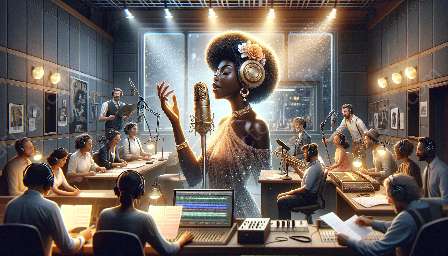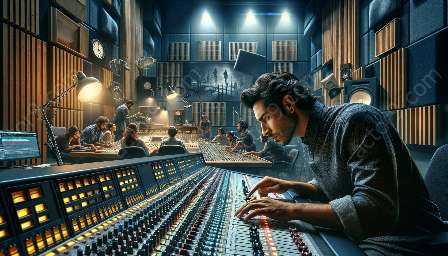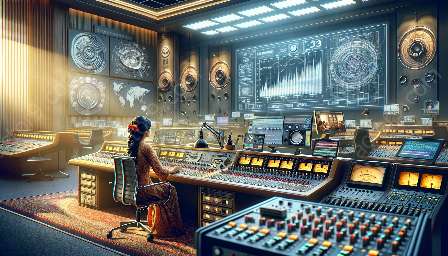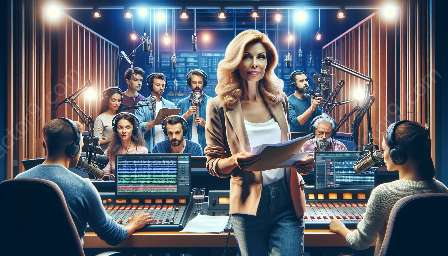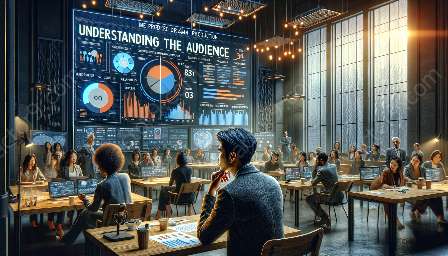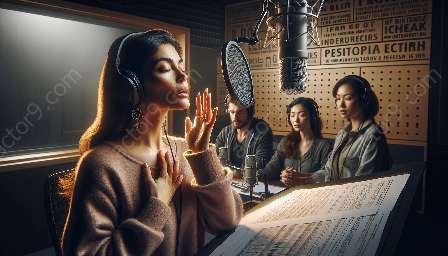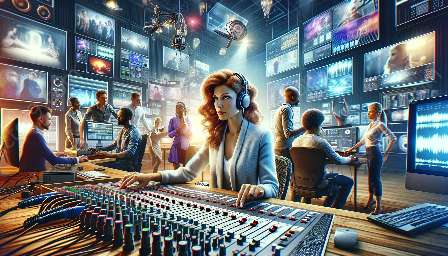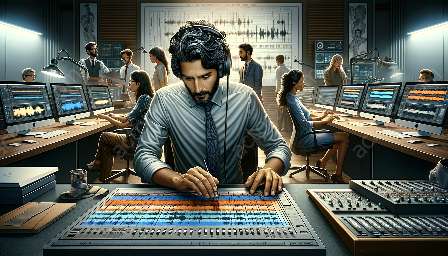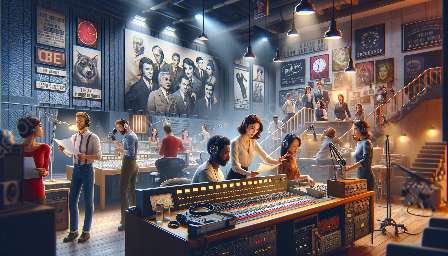Radio drama is a powerful art form that relies on the combination of voice acting, sound effects, and music to convey a compelling narrative. While verbal communication is crucial in radio dramas, non-verbal communication also plays a significant role in bringing the stories to life. Understanding the nuances of non-verbal communication in radio drama performance can greatly enhance the interpretation, performance, and production of these audio productions.
Understanding Non-Verbal Communication in Radio Drama
Non-verbal communication encompasses a wide range of cues and signals that contribute to the overall meaning of a message. In the context of radio drama, non-verbal communication includes elements such as vocal inflections, tone, pace, and volume of speech, as well as the use of sound effects and music to create atmosphere and convey emotions. These non-verbal cues are essential for conveying the personalities of characters, setting the mood, and guiding the listener's imagination.
Body Language and Voice Acting
While radio drama relies solely on auditory cues, voice actors use their vocal abilities to portray emotions, attitudes, and intentions. By modulating their voices, adding emphasis, and adjusting their tone, voice actors are able to convey a wealth of non-verbal information that complements the verbal dialogue. Additionally, body language can be expressed through vocal performance, allowing the listener to imagine the physical actions and reactions of the characters.
Sound Effects and Music
Sound effects and music are powerful tools in radio drama production that contribute to non-verbal communication. The use of sound effects such as footsteps, door creaks, or environmental sounds can create immersive scenes and provide context for the listener. Similarly, music can convey mood and emotion, adding depth to the storytelling and enhancing the non-verbal cues present in the performance.
Implications for Interpretation and Performance
Understanding the role of non-verbal communication in radio drama performance has significant implications for interpretation and performance. Voice actors and directors must consider the nuanced delivery of lines, the use of sound effects, and the integration of music to effectively convey non-verbal cues. By doing so, they can create rich, multi-dimensional characters and evoke vivid imagery within the listener's mind.
Enhancing Emotional Depth
Non-verbal communication can add layers of emotional depth to radio drama performances. Through the use of vocal inflections, sound effects, and music, voice actors and production teams can effectively convey the underlying emotions and subtext of a scene. This elevates the overall impact of the storytelling and fosters a deeper connection between the audience and the narrative.
Creating Atmosphere and Setting
Non-verbal cues play a crucial role in establishing the atmosphere and setting of a radio drama. By using sound effects and music to evoke specific sounds and emotions, the production team can transport listeners to different times, places, and environments. This immersive experience is facilitated by the skillful integration of non-verbal communication, enhancing the overall performance and interpretation of the radio drama.
Implications for Radio Drama Production
Non-verbal communication also has practical implications for the production of radio dramas. Directors, sound engineers, and composers must collaborate to ensure that non-verbal cues are effectively incorporated into the audio landscape. This requires meticulous attention to detail and a deep understanding of how non-verbal elements contribute to the overall impact of the production.
Sound Design and Mixing
Effective sound design and mixing are essential for highlighting non-verbal cues within radio drama performances. Sound engineers use a combination of Foley effects, ambient sounds, and music to create a rich auditory environment that complements the verbal dialogue. The careful balance and integration of these elements are crucial for optimizing non-verbal communication within the production.
Collaborative Process
Radio drama production is a collaborative process that involves the coordination of various artistic elements. Non-verbal communication serves as a common ground for voice actors, sound engineers, and composers to work together in crafting a cohesive and impactful audio narrative. By aligning their efforts to effectively convey non-verbal cues, the production team can elevate the overall quality of the radio drama.
Conclusion
Exploring non-verbal communication in radio drama performance unveils its profound significance in shaping interpretation, performance, and production. Understanding the nuanced interplay of vocal nuances, sound effects, and music enriches the storytelling experience, creating a dynamic and immersive listening journey. By harnessing the power of non-verbal communication, radio drama continues to captivate audiences and showcase the limitless possibilities of audio storytelling.

